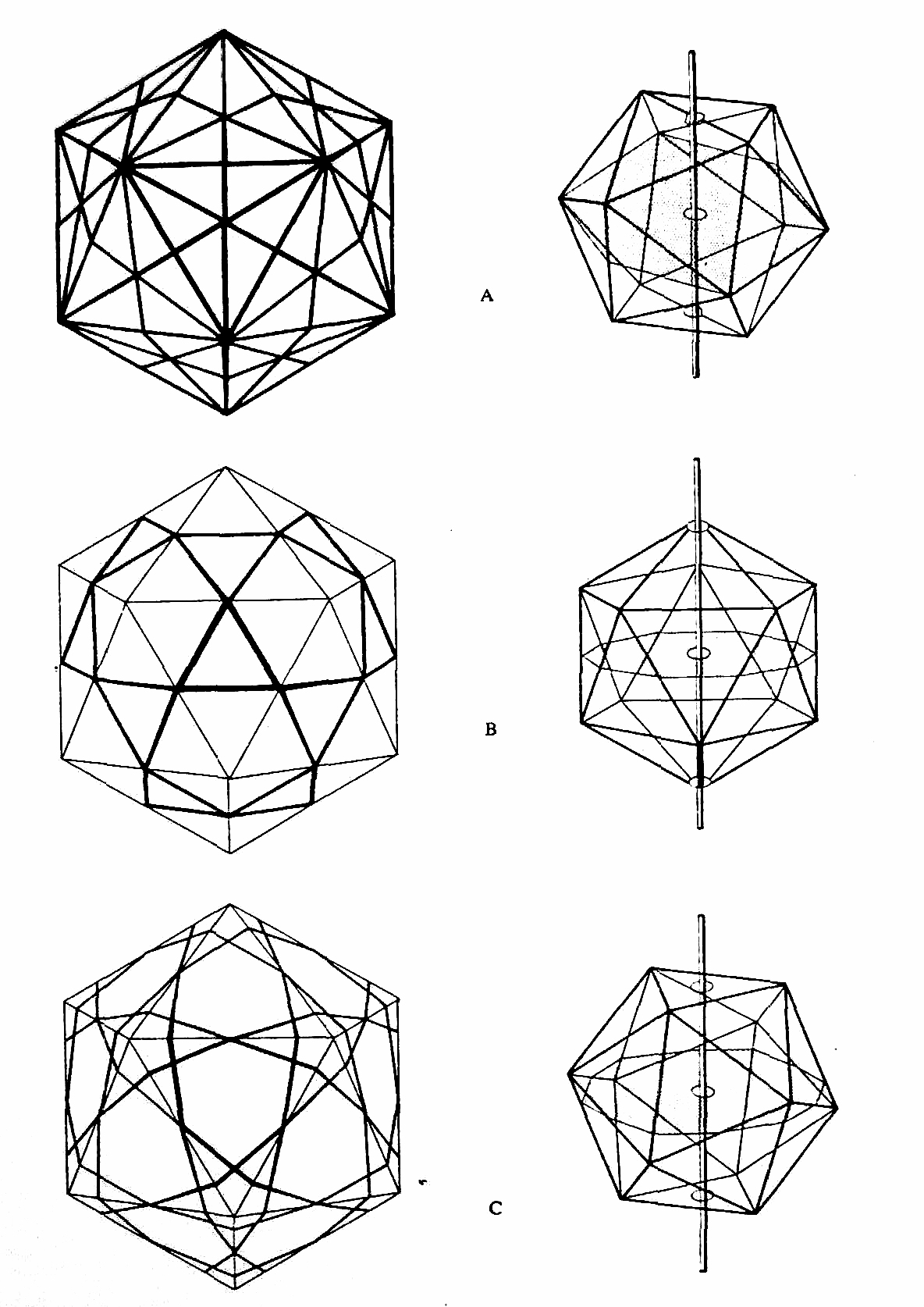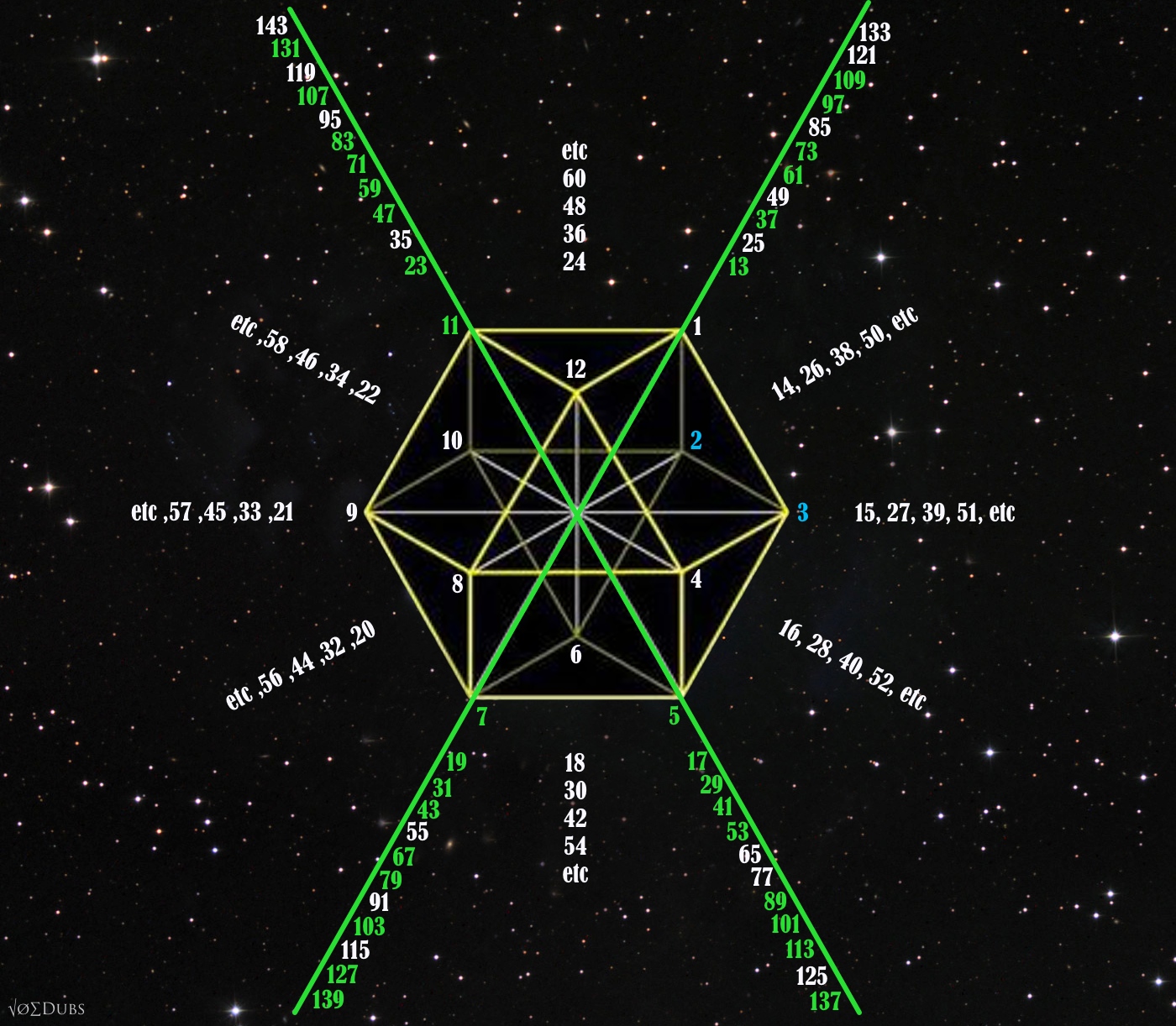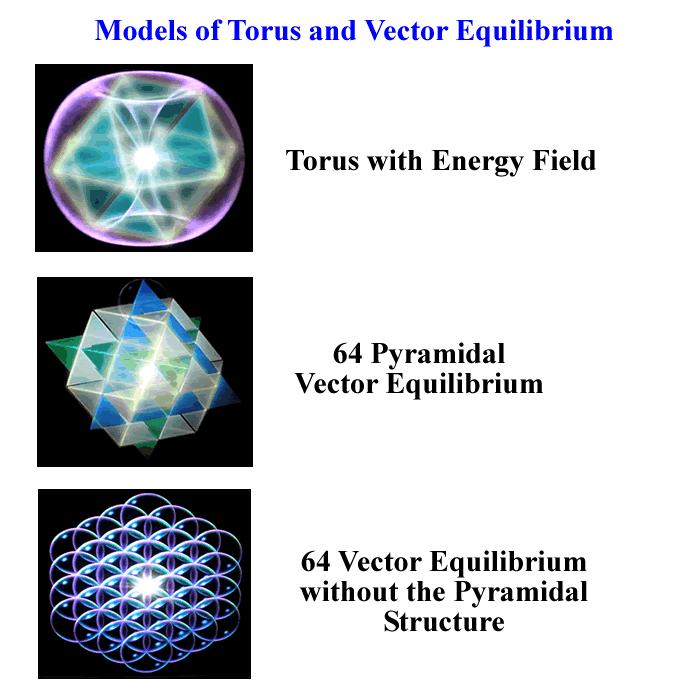Title: The vector equilibrium
Description: Explore the vector equilibrium as the fundamental structure of spacetime, where disturbances generate spin and torsion fields, linking quantum physics, plasma dynamics, and the spiral energy principles of Viktor Schauberger. Delve into the scientific, metaphysical, occult, and spiritual dimensions of this geometric blueprint of reality.
Author: Alloya Huckfield
tags:
- vector-equilibrium
- torsion-fields
- spin-dynamics
- Buckminster-Fuller
- torsion
Date:
icon: LiAsteriskthe-vector-equilibrium

The vector equilibrium (a geometric configuration of balanced forces) is theorized to be the fundamental structure of spacetime at the quantum level. When this equilibrium is disturbed, it generates spin and torsion fields—corresponding to the electromagnetic vortices in plasma spin foam. This aligns with the work of Viktor Schauberger and others who studied the spiral dynamics of energy in nature.
The concept of the vector equilibrium as the fundamental structure of spacetime at the quantum level is a profound and multidimensional idea that bridges science, metaphysics, and spirituality. At its core, the vector equilibrium, also known as the "VE," is a geometric configuration where all forces are perfectly balanced, creating a state of equilibrium. This shape, composed of interconnected vectors of equal length, represents a zero-point or ground state of energy where all opposing forces cancel each other out. In this state, there is no movement, no distortion—only pure potential. However, when this equilibrium is disturbed, it generates dynamic phenomena such as spin and torsion fields, which correspond to the electromagnetic vortices observed in plasma spin foam and the spiral dynamics of energy in nature, as explored by figures like Viktor Schauberger.
From a scientific perspective, the vector equilibrium can be understood through the lens of geometry and physics. Buckminster Fuller, who popularized the term, described it as the most balanced arrangement of vectors in space, where twelve equal-length edges radiate symmetrically from a central point, forming twenty triangular faces. This structure is unique because it is the only geometric form where all forces are perfectly balanced in all directions. At the quantum level, this equilibrium could represent the underlying fabric of spacetime itself—a lattice-like matrix that gives rise to the forces and particles we observe. When this balance is disrupted, whether through external energy input or internal fluctuations, the system responds by generating motion. This motion manifests as spin, a fundamental property of quantum particles, and torsion, a twisting force that propagates through spacetime.
Torsion fields, though less commonly discussed than electromagnetic or gravitational fields, have been theorized in alternative physics as a means of transmitting information and energy without the limitations of the speed of light. These fields are intrinsically linked to spin, as any rotating object generates a torsion field around it. In plasma physics, this concept aligns with the behavior of ionized gases, where charged particles form dynamic, self-organizing vortices. These vortices, or plasmoids, exhibit spiral motion, echoing the patterns seen in galaxies, hurricanes, and even the double-helix structure of DNA. Viktor Schauberger, an Austrian naturalist, observed these spiral dynamics in water and air, concluding that nature operates on principles of vortex motion—energy moving in spirals rather than straight lines. His work suggested that implosive, centripetal vortices (as opposed to explosive, centrifugal motion) could generate levitational forces and over-unity energy effects, challenging conventional thermodynamics.

The connection between the vector equilibrium and torsion fields also finds resonance in the work of Russian scientists like Nikolai Kozyrev and G.I. Shipov, who proposed that torsion waves are the carriers of consciousness and time itself. Kozyrev’s experiments with gyroscopes and asymmetrical weights suggested that time could be influenced by rotational forces, implying a deep link between spin, torsion, and the fabric of reality. If spacetime is indeed structured as a dynamic lattice of vector equilibria, then disturbances in this lattice would naturally propagate as torsion waves, potentially explaining phenomena like non-locality, quantum entanglement, and even the observer effect in quantum mechanics.
Metaphysically, the vector equilibrium represents the unmanifest void—the state of pure potential before creation. In sacred geometry, it is often associated with the "fruit of life," a pattern that encodes the blueprint of existence. When this equilibrium is disturbed, it symbolizes the first movement of creation, the moment when the infinite condenses into form. This mirrors the ancient Hermetic axiom, "As above, so below," suggesting that the same geometric principles governing the cosmos also operate within the microcosm of the quantum realm. The spin and torsion fields generated from this disturbance can be seen as the primal forces of manifestation—the spiraling energies that give rise to galaxies, solar systems, and living organisms.

From an occult perspective, the vector equilibrium and its dynamic expressions align with esoteric teachings about the ether, the subtle medium that permeates all space. Theosophists and alchemists described the ether as a fluid-like substance that transmits spiritual and psychic energies. When this ether is agitated, it forms vortices and currents, much like the torsion fields in modern physics. The spinning motion of these vortices is central to many mystical traditions, from the Kundalini energy in Hinduism, which spirals up the spine, to the Caduceus symbol of intertwined serpents, representing the balanced flow of opposing forces. The disturbance of the vector equilibrium can thus be interpreted as the activation of these latent energies, leading to higher states of consciousness and spiritual awakening.
Spiritually, the interplay between equilibrium and dynamic motion reflects the dance of stillness and activity, being and becoming. The vector equilibrium symbolizes the silent witness—the unchanging awareness behind all phenomena—while the spin and torsion fields represent the ceaseless flow of creation and dissolution. In Eastern philosophies, this is akin to the interplay between Shiva (the still point) and Shakti (the dynamic energy). The spiral, as a universal symbol, embodies growth, evolution, and the journey inward toward the center. Viktor Schauberger’s insights into natural vortices resonate with this spiritual view, suggesting that true energy is not brute force but harmonious, rhythmic motion that follows the laws of nature.
The idea that the vector equilibrium underlies spacetime and generates spin and torsion fields when disturbed is a unifying concept that spans disciplines. Scientifically, it offers a geometric framework for understanding quantum mechanics and plasma dynamics. Metaphysically, it bridges the gap between form and formlessness, providing a model for how energy condenses into matter. Occult and spiritual traditions echo these principles, depicting reality as a play of forces between stillness and motion. Whether through the lens of physics, sacred geometry, or mysticism, the vector equilibrium and its dynamic expressions reveal a profound truth: that the universe is a living, spinning, twisting tapestry of balanced and unbalanced forces, forever dancing on the edge of chaos and order.